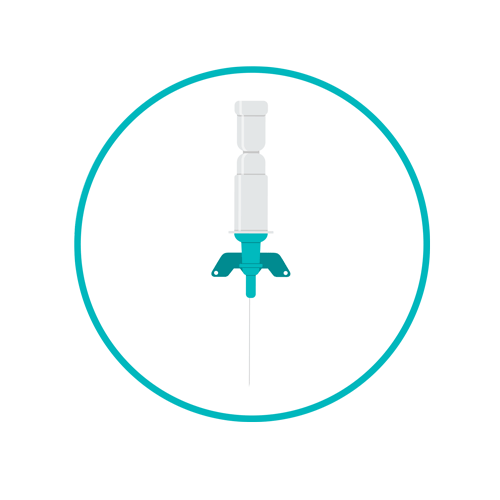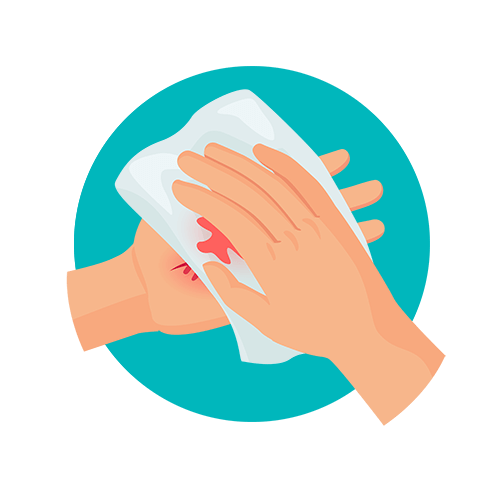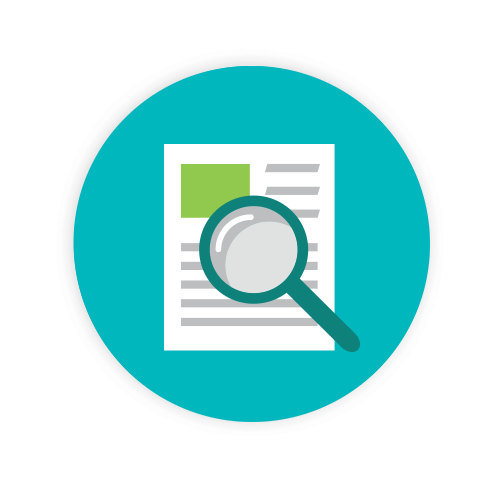10 Lessons and Tips from 2021 to Improve Medical Waste Management

As we close out 2021, Daniels Health would like to take a moment to review 10 of the most useful tips and lessons we have shared this past year. Regardless of whether your medical facility is small or large, where it’s located, or how many patients you see a year, every healthcare provider should follow the rules when it comes to healthcare waste management practices. Here are our top ten tips to consider for compliance.
THE TEN LESSONS WE WILL COVER:
2 / Know the difference betweem regulaed, infectious, and hazardous waste
3 / Avoid needlestick injuries
4 / Properly dispose of sharps
5 / Properly package and label waste streams
6 / Follow storage limitations and guidelines for medical waste
7 / Know your hazardous waste generator status
8 / Know the difference between bulk and trace chemotherapy waste
9 / Know your state’s approved disposal methods
10 / Know where to find the rules for your state
Tip #1 – Segregate your waste! 
Always segregate medical waste at its point of origin. Knowledge of waste stream basics is the first step toward training your staff to properly dispose of medical waste in your hospital, clinic, outpatient surgical center, or dental office. Knowing the regulations of the federal government and your state will keep you compliant and safe, while protecting the environment.
Typically, medical waste is separated into eight different types: sharps, pathological/anatomical, pharmaceutical, biological (including blood and/or blood-related products), microbiological, isolation, and contaminated animal waste. Learn more about proper waste segregation here.
Tip #2 –Know the difference between regulated, infectious, and hazardous medical waste
A regulated medical waste is something that has the potential to be contaminated with a possible infectious material, such as blood or body fluids. In a nutshell, if a waste has blood that drips, pours, or flakes, even after it has dried, then it’s a regulated medical waste.
An infectious medical waste is defined as any waste product or organism typically generated in healthcare scenarios or health-related industries that is capable of producing infection or an infectious disease in humans. Check out our blog covering 10 Types of Infectious Waste.
A hazardous waste is a waste that exhibits certain characteristics. Such waste could be toxic or flammable. It might also have the capability of being reactive with another chemical. Finally, it can be corrosive in nature. A listing of hazardous waste and examples can be found here under the Code of Federal Regulations.
Tip #3 – Avoid Needlestick injuries 
Injuries caused by sharps or needlestick accidents are considered a common healthcare industry hazard for nurses, doctors, and surgical staff. Unfortunately, injuries and infections can also occur within janitorial and housekeeping staff due to improper disposal practices.
On their website, the Occupational Safety and Health Administration (OSHA) stipulates that over five million healthcare industry workers – and ancillary occupations – continue to be at a risk for bloodborne pathogen exposure. Such exposures can include but are not limited to HIV, hepatitis B and C, and others. Properly dispose of sharps. (See Tip #4.)
Tip #4 – Properly dispose of sharps
A “sharp” can be anything that has an edge that can slash, poke, pierce, cut, or otherwise injure the skin. Sharps include not only needles, but broken glass, suture needles, broken or empty ampoules, trocars, butterflies, or culture slides or dishes, among others.
OSHA standards require that sharps containers must be closable, puncture resistant, and leak-proof on the sides and bottom. Maintain them in an upright position and do not overfill. The containers must be labeled and or color-coded according to 29 CFR 1910.1030(g)(1)(i), which states they should be red and clearly marked with the biohazard symbol. Learn more about safe disposal of sharps here.
Tip #5 – Properly package and label waste streams
In addition to federal guidelines on packing and labeling different types of healthcare waste, every state also has its own regulations regarding this topic. As such, every waste stream comes with its own rules for packaging and labeling for transportation. Shipping papers are required when medical waste is transported off-site for disposal or destruction. Such guidelines can be found in a state’s Administrative Codes or state-EPA rules for solid and hazardous waste.
Numerous agencies provide guidance for packaging and storage recommendations such as the EPA, OSHA, the Department of Transportation (DOT) and the Drug Enforcement Agency (DEA). For example, you can find federal guidelines for regulated medical waste in 49 CFR §173.197 – Regulated medical waste.
Check out our guide to proper labelling and color coding of various waste streams.

Tip #6 – Follow storage limitations and guidelines for medical waste
Storage time limitations depend on the type of waste, its volume, and temperature at which it’s stored. For example, in Arizona, biohazard medical waste cannot be stored longer than 90 days unless the waste generator receives approval with state agencies. In other cases, an infectious waste can be stored under refrigeration conditions for up to 30 days. Always check!
Tip #7 – Know your hazardous waste generator status
Do you know if your facility a large quantity generator or a small quantity generator of hazardous waste? The EPA defines a waste generator status for any facility that produces hazardous waste based on the volume of such waste accumulated per month. Refer to Title 40 CFR Part 262 for additional details, but in a nutshell, generators can be defined as one of three categories:
- Very small quality generator (VSQG) – less than 220 pounds per month
- Small quantity generator (SQG) – more than 220 pounds per month but less than 2,200 pounds per month
- Large quantity generator (LQG) – more than 2,200 pounds per month
Be aware that states may have their own volume or weight recommendations.
Tip #8 – Know the difference between bulk and trace chemotherapy waste
Chemotherapy waste is typically defined as either trace chemotherapy waste or bulk chemotherapy waste. Chemotherapy wastes that are generally deemed trace often include IV tubing, IV bags, and vials, and are known as “RCRA empty.” This type of listed waste is defined as a trace waste that can be managed as regulated medical waste but must also be properly contained and labeled. Trace chemotherapy waste containers should be yellow.
Bulk chemotherapy waste includes any type of container or bag that has held a chemotherapy agent and does not qualify under the RCRA empty rules. Bulk chemotherapy waste also includes sponges or other materials that might be used to clean up a spill or visibly contaminated personal protective equipment (PPE). Other types of bulk chemotherapy waste include full bottles, bags, or vials of U-listed chemotherapy drugs under RCRA hazardous waste regulations. Bulk chemo containers are often black.
Tip #9 – Know your state’s approved disposal methods
State and federal guidelines must be followed in order to remain compliant with your state’s medical waste disposal processes. In many cases, state guidelines are more detailed in context than federal regulations. Healthcare providers should be familiar with (read and review) guidelines provided by the Environmental Protection Agency (EPA) and the Resource Conservation and Recovery Act (RCRA) as well.
 Tip #10 – Know where to find the rules for your state
Tip #10 – Know where to find the rules for your state
In addition to federal guidelines, every state also has rules and regulations for healthcare waste management. Good places to start include the state government’s website. State Departments of Environmental Quality are also excellent sources for information, as are a state’s administrative codes or regulations. State Departments of Transportation are also good resources, as are a state’s Bureau of Waste Management.
Stay compliant.
Daniels Health is dedicated to the protection of healthcare providers through proper and compliant medical waste management and disposal practices. Such practices also protect state resources and environments. Turn to Daniels for resources, compliant products, and experienced services when it comes to your healthcare facility needs. Call a representative today to learn how you can ensure safe, compliant, cost-effective, and sustainable medical waste management processes.
Let's Talk!
Your time is valuable, and we don’t want to play hard to get. You can either phone us directly on the details listed on our contact page, or feel free to fill out this short form and one of our team members will get back to you as quickly as possible.
